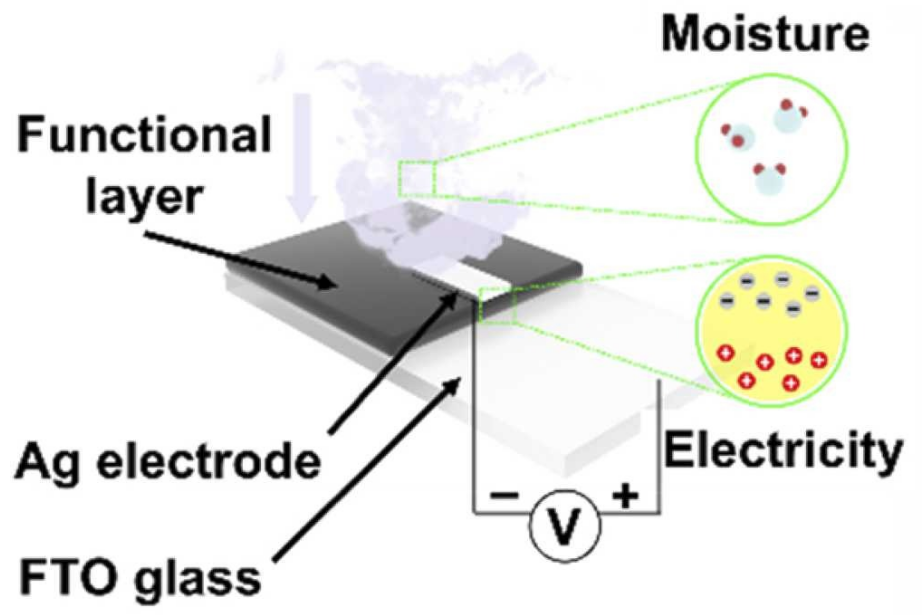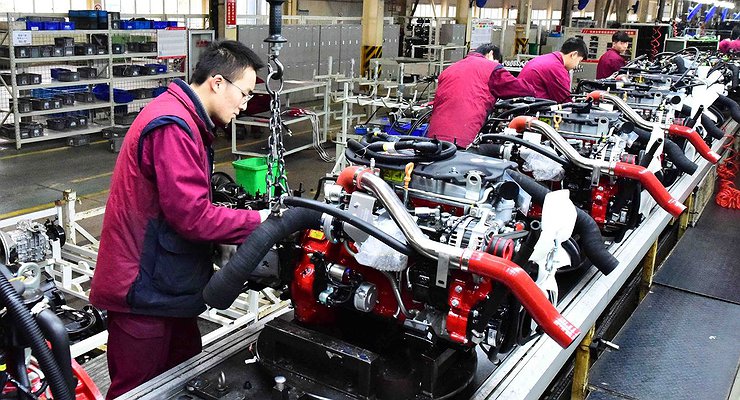Strategic Aspects did not share details about the technology underlying the development of the “energy ink”. However, information on research partners from the University of New South Wales (UNSW) and the National Association for Scientific and Applied Research (CSIRO) suggests what development could be in question.
The fact is, a group of scientists from UNSW and CSIRO recently published an article in the journal Nano Energy about a battery operating on a moisture (difference) gradient (drop). The development is based on graphene oxide, which says Energy Ink. Graphene oxide in the battery plays the role of ion carrier and medium for their appearance in the process of absorbing moisture from the air. The electrodes are a layer of fluorine doped tin oxide (FTO) and silver.


Humidity causes H + proton migration that creates charge separation / Photo University of New South Wales
how does everything work
In the dry “functional layer” of graphene oxide, the protons are stationary and immobile. With the onset of moisture, one side begins to absorb water molecules from the air and during this time they are ionized, causing the formation of carboxylic acid (COOH) and positively charged hydrogen ions (hydrides).
On the wet side, more hydrides and ions move towards the dry graphene oxide layer leading to a potential difference or voltage at the electrodes. As they dry, the hydrides return to their original state. Moisture build-up restarts the process and the device is recharged and ready for operation.


Only humidity difference is required to generate electricity / University of New South Wales Photography
What are the chances of the technology entering the market?
The developers claim that the prototype battery will be available in the third quarter of this year. During the experiments, the battery was able to produce a voltage of 0.85 per square centimeter of surface and a current of 92.8 μA. Let’s be clear, the battery is made of flexible materials and promises to be the first to enter the market of electronic medical patches. Theoretically, it can now power the vast majority of small electronic devices like smartwatches by charging them from human skin sweat.


Pocket Calculator Battery Test Examples / Photo University of New South Wales
To produce a flexible battery with a capacity of one amp hour, which can charge regardless of humidity in the air, you need to create an element with an area of 36 cm.2nd. To demonstrate the concept, the company will make an element with an area of 100 cm.2nd and is capable of producing an element with an area of 3 m2.



















